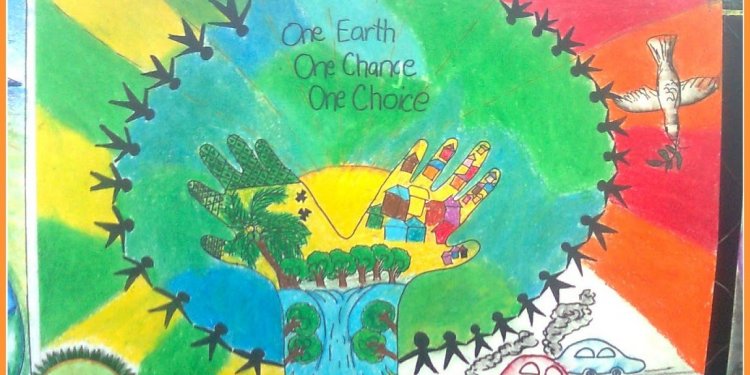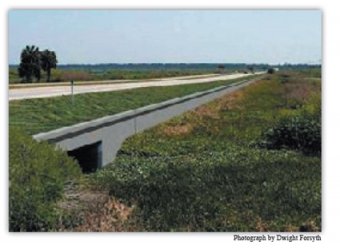
Environmental Protection and Conservation of the ecosystems
 “Ecosystem services, such as cleaning the air, filtering and cooling water, storing and cycling nutrients, conserving and generating soils, pollinating crops and other plants, regulating climate, sequestering carbon, protecting areas against storm and flood damage, and maintaining aquifers and streams, are all provided by the existing expanses of forests, wetlands, and other natural lands. These ecologically valuable lands also provide marketable goods and ser¬vices, like forest products, fish and wildlife, and recreation. They serve as vital habitat for resident and migratory spe¬cies, maintain a vast genetic library, provide scenery, and contribute in many ways to the health and quality of life.”1
“Ecosystem services, such as cleaning the air, filtering and cooling water, storing and cycling nutrients, conserving and generating soils, pollinating crops and other plants, regulating climate, sequestering carbon, protecting areas against storm and flood damage, and maintaining aquifers and streams, are all provided by the existing expanses of forests, wetlands, and other natural lands. These ecologically valuable lands also provide marketable goods and ser¬vices, like forest products, fish and wildlife, and recreation. They serve as vital habitat for resident and migratory spe¬cies, maintain a vast genetic library, provide scenery, and contribute in many ways to the health and quality of life.”1
We must keep in mind that while, needing to provide for the movement of goods and services and mobility of the public, the value of the ecosystem services provided by “green infrastructure” is vital to sustainability. The GHP Conservation and Ecosystem Protection Group was developed to assist in merging the “Green” and the “Grey” infrastructure in ways that both can coexist. The CEP Group fosters collaboration among transportation, environmental and conservation agencies to encourage linkages between transportation planning and environmental protection initiatives. The goal is to coordinate state Green Infrastructure and wildlife conservation planning activities with regional and metropolitan transportation planning efforts ensuring that both work together.
Specific activities include:
• Developing a Regional Ecosystem Framework - Baseline information needed regardless of approach taken to implement conservation initiatives. • Develop Strategic (Transportation) Conservation Plans - generic protocol that could be used by other Rural Planning Organizations (RPOs) / Metropolitan Planning Organizations (MPOs) to develop their Strategic Conservation PlanStrategic (Transportation) Conservation Plans will allow the RPO/MPO to effectively design transportation projects that fit the RPO/MPO schedule and budget and that address the safety and mobility concerns of the region’s transportation system while promoting ecosystem protection, and sustain the economic vitality of the area. These plans will be developed using a variety of conservation ecosystem approaches. The CEP supports the application of any of these approaches or a combination of approaches depending upon the needs of the specific area and consistency with state practices or approaches.
The approaches include:
• Eco-Logical- An Ecosystem Approach to Developing Infrastructure Projects - offers a framework for achieving greater interagency cooperative conservation. Eco-Logical provides a non-prescriptive approach that enables Federal, State, tribal and local partners involved in infrastructure planning, design, review and construction to work together to make infrastructure more sensitive to wildlife and their ecosystems.
Using an STCP for rural/urban Planning Organizations will:
• Reduce regulatory delays, • Encourage the transportation facility to be planned in context within the region’s ecology and within the exiting and future frame work of the community, • Protect important eco-systems that could be in potential conflict with the transportation plan. • Generate reasonable cost estimates • Create awareness of environmental featuresSupports the following initiatives:
• Linking Planning and NEPA • Green Highways Partnership • SAFETEA-LU 6001 and 6002 requirements • Highlands Action Program • Chesapeake Bay ProgramREGIONAL CONSERVATION STRATEGIES (RCS)
Recently the Group has worked with the Keystone Conservation Trust (KCT) to identify ecosystem management opportunities in the Pennsylvania and New Jersey Highlands.
KCT is focused on the development of Regional Conservation Strategies (RCS) that will engage stakeholders involved in protecting large, complex landscapes. The RCS process integrates cutting-edge conservation science with innovative strategic planning, thereby producing rich and multidimensional analyses.
KCT is currently utilizing this strategy in a number of landscapes throughout Pennsylvania, New Jersey, and Florida. The Green Highways Partnership looks forward to incorporating their experience into pilot projects.
Northern Tier Project
Location- 5 counties in NE Pennsylvania:
Ecological Importance- The Nature conservancy has Identified the region as one of its top six priorities because of the high diversity in total species, richness of plants and animals, and the presence of unique species found only in this region.
Transportation- Contains transportation infrastructures ranging from major corridors, Interstate 81, State Routes US 6, US 15, US 11 and US 220 to a large network of local unpaved roads.
• Overlay data on landscape types • Categorize landscape attributes • ID and connect network elements • Set priorities for transportation and conservation planning • Limit field evaluation • Establish performance measuresThe creation of “Strategic conservation Transportation Plan” for use by rural and metropolitan planning organizations.
Wildlife Crossings & Wildlife Corridors
Millions of vertebrates - birds, reptiles, mammals, and amphibians - are killed every year by vehicles traveling on America's roads. Each year, more than 200 motorists are killed and thousands more are injured in animal-vehicle collisions, according to The Wildlife Society. Moreover, roadways often cut through habitats, fragmenting animal populations and disrupting ecosystems.






















